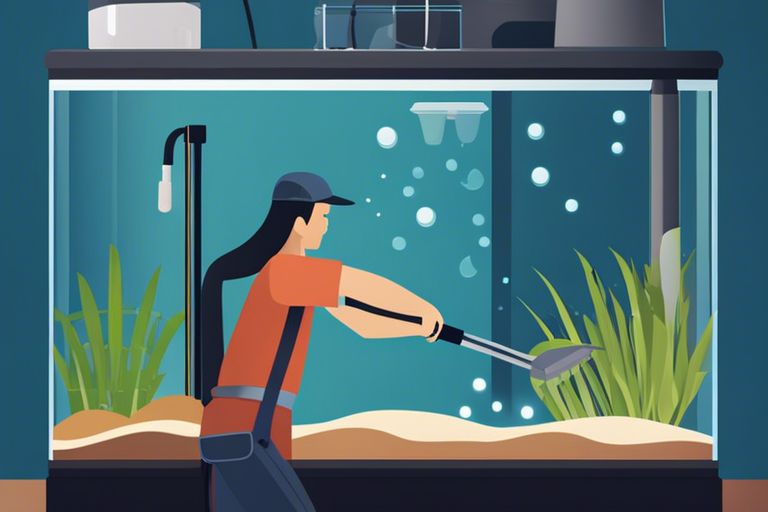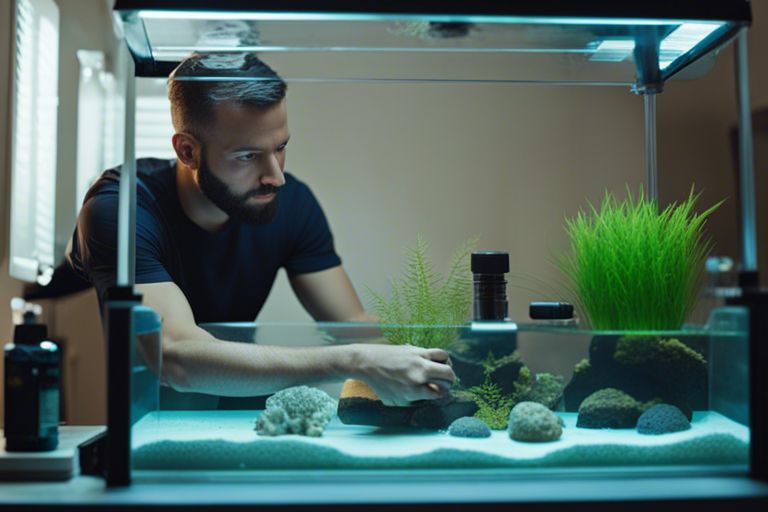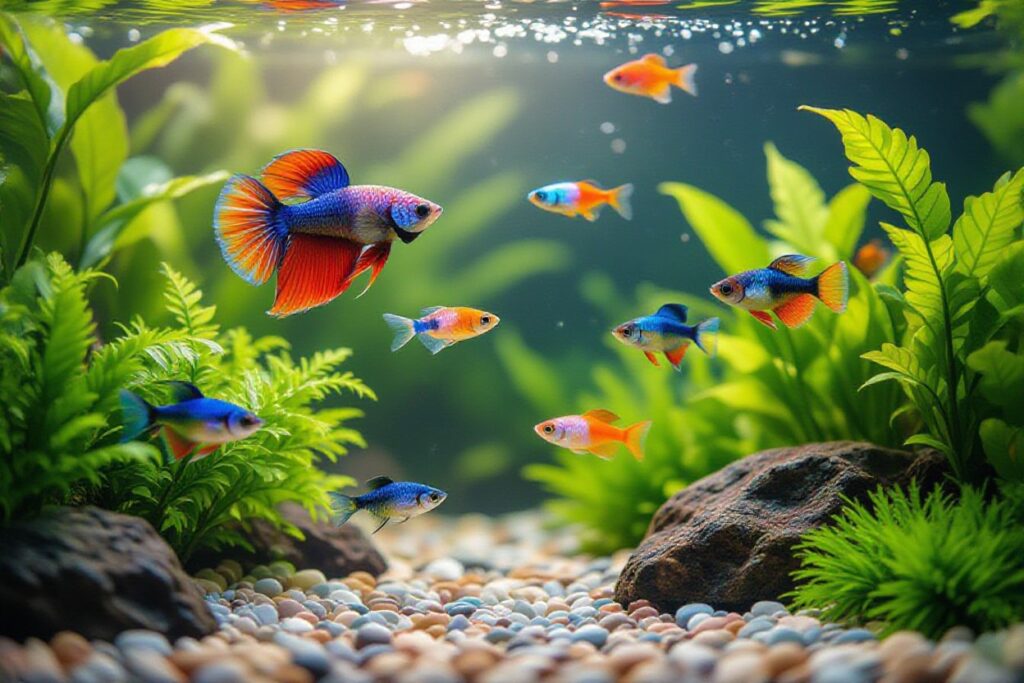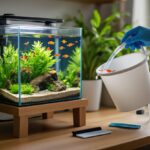Just starting out with your first fish tank and feeling overwhelmed with the cleaning process? Fear not, we’ve got you covered! In this step-by-step guide, we will walk you through the process of cleaning your fish tank like a pro. By following these easy and concise steps, you will be able to maintain a clean and healthy environment for your aquatic friends. Let’s dive right in and get started!

Understanding Your Fish Tank
Before you explore into the process of cleaning your fish tank, it is important to have a good understanding of the unique characteristics of your tank and its inhabitants.
Types of Fish Tanks and Their Specific Needs
Now, let’s look at the different types of fish tanks and the specific needs of each to ensure proper cleaning and maintenance. Recognizing these differences will help you provide the best care for your underwater friends.
| Type | Specific Needs |
|---|---|
| Freshwater | Regular water changes, proper filtration |
| Saltwater | Maintaining proper salinity levels, monitoring pH |
| Planted | Pruning plants, ensuring proper lighting |
| Reef | Maintaining coral health, monitoring calcium levels |
| Coldwater | Regulating temperature, providing adequate oxygenation |
Factors Affecting Cleaning Frequency and Methods
One important aspect to consider when cleaning your fish tank is the frequency and methods you use, as this can impact the overall health of your aquatic ecosystem. Understanding the factors that influence cleaning will help you develop a suitable maintenance routine. After all, a well-maintained tank leads to healthier and happier fish.
- Size of the tank
- Number and type of fish
- Filtration system
- Presence of live plants
- Feeding habits of the fish
Their combined effect determines how frequently you need to clean your tank and the methods you should employ. By taking these factors into account, you can create a cleaning schedule that keeps your fish tank in optimal condition.

Preparing for the Clean-Up
Essential Tools and Equipment
CleanUp Before starting your fish tank cleaning, it is necessary to gather all the necessary tools and equipment. You will need items such as a algae scrubber, siphon hose, bucket, clean towels, water conditioner, and a water testing kit. Having these tools on hand will make the cleaning process more efficient and effective.
Tips Before You Start
Before you begin cleaning your fish tank, remember to unplug all electrical equipment such as heaters and filters. Also, ensure you have a designated area to place your fish during the cleaning process. It is recommended to feed your fish lightly before cleaning to reduce waste production during the process. Lastly, have your water conditioner ready to treat the new water before adding it back to the tank.
- Start by unplugging all electrical equipment
- Have a designated area for your fish during cleaning
- Feed your fish lightly before cleaning
Equipment
Before you start the cleaning process, it is crucial to have all the necessary equipment within reach. This includes items such as a fish net for removing fish, a gravel vacuum for cleaning substrate, glass cleaner for tank walls, and a water siphon for water changes. Having these tools readily available will streamline the cleaning process and ensure a successful clean-up.
- Ensure all necessary equipment is within reach
- Have a plan in place for removing and returning fish
Preparing
Once you have gathered all the necessary tools and equipment, it is time to prepare your workspace. Lay down old towels or a plastic mat to protect the surface from water spills. Make sure to have your bucket and siphon hose nearby for easy access. Clearing the area around the tank will provide you with the space needed to work efficiently and without hindrance.
Step-by-Step Fish Tank Cleaning
| Removing Algae and Debris | Water Changing Techniques |
Removing Algae and Debris |
Water Changing Techniques |
Removing Algae and Debris: While cleaning your fish tank, it’s important to start by removing algae and debris from the glass, decorations, and plants. Use a algae scraper or a soft sponge to gently scrub away the buildup. Ensure to also vacuum any debris from the substrate to maintain a clean environment for your fish.
Water Changing Techniques: For optimal fish tank health, regular water changes are crucial. Experts recommend changing 10-15% of the water every 2 weeks for freshwater tanks and 25% for saltwater tanks. During water changes, make sure to treat new water with a dechlorinator to remove harmful chemicals.
StepbyStep Cleaning Gravel and Decorations: There’s more to fish tank cleaning than just water changes. Cleaning gravel and decorations is important to prevent the buildup of harmful bacteria and algae. Use a gravel vacuum to siphon through the substrate and rid it of any waste. Decorations should be scrubbed clean with a soft brush to maintain their appearance and ensure they do not harm your fish.
Cleaning Gravel and Decorations: There’s no escaping the fact that fish waste, uneaten food, and other debris can accumulate in the gravel and on decorations over time. Regular maintenance is key to preventing water quality issues. As you clean the gravel, be mindful not to disturb beneficial bacteria living in it. A gentle scrubbing of decorations will keep them looking vibrant and safe for your fish.
Filter Maintenance: Removing algae and debris is important, but maintaining your filter is equally important for a healthy fish tank. Filters help remove ammonia and other harmful substances from the water. Ensure to regularly clean and replace filter media according to the manufacturer’s instructions to keep the filter running efficiently.
Removing Filter Maintenance: Changing filter media every 4-6 weeks will ensure that your filter continues to function effectively. Rinse the filter media in the removed tank water to preserve beneficial bacteria. This will help maintain water quality and keep your fish happy and healthy.

Maintaining a Healthy Aquarium
Pros and Cons of Different Cleaning Schedules
| Cleaning Schedule | Pros and Cons |
| Weekly | Keeps tank clean, prevents algae buildup; Can be time-consuming |
| Bi-weekly | Maintains good water quality; Risk of missing issues between cleanings |
| Monthly | Less disruptive to aquatic life; More difficult to maintain water parameters |
Tips for Long-Term Tank Health
While regular water changes are crucial, other factors contribute to long-term tank health. Ensure proper filtration and water quality testing. Regularly clean algae and debris, and maintain stable water temperature and pH levels for a thriving aquarium ecosystem.
- Choose the right location away from direct sunlight or drafts
- Invest in a high-quality filtration system
- Monitor water parameters regularly
This will create a balanced environment for your aquatic pets, promoting their health and happiness.
Summing up
Drawing together all the steps discussed in this guide, beginners can now confidently maintain a clean and healthy fish tank. Regular cleaning, controlled feeding, proper equipment usage, and water testing are crucial for ensuring the well-being of your aquatic pets. With patience and consistency, the task of fish tank cleaning will become a routine practice that enhances the beauty of your aquarium and promotes the longevity of your fish. Remember to always research and seek professional advice when in doubt, as every tank may have unique needs. By following these step-by-step instructions, even novice fish enthusiasts can enjoy a thriving underwater environment for years to come.
FAQ
Q: Why is fish tank cleaning important?
A: Regular fish tank cleaning is crucial to maintain a healthy aquatic environment for your fish. It helps remove waste, algae, and other harmful substances that can endanger the well-being of your fish.
Q: How often should I clean my fish tank?
A: It is recommended to clean your fish tank at least once a week. However, the frequency may vary depending on the size of the tank, the number of fish, and the type of filtration system you have.
Q: What equipment do I need for fish tank cleaning?
A: To clean your fish tank, you will need a algae scraper, siphon hose, bucket, aquarium-safe cleaning products, fish net, and clean towels or sponges.
Q: How do I clean the aquarium glass without scratching it?
A: To clean the aquarium glass without scratching it, use an algae scraper or a magnetic glass cleaner specifically designed for fish tanks. Avoid using abrasive materials like rough sponges or brushes.
Q: Is it necessary to remove the fish from the tank during cleaning?
A: It is not necessary to remove the fish from the tank during regular cleaning. However, if you are performing a deep clean or using strong cleaning products, it is advisable to transfer the fish to a temporary tank.
Q: How do I maintain the filter during cleaning?
A: When cleaning the fish tank, rinse the filter media in the water that you siphon out of the tank. Avoid using tap water or cleaning agents as they can harm the beneficial bacteria in the filter.
Q: What are some tips for beginners to make fish tank cleaning easier?
A: Some tips for beginners include establishing a routine cleaning schedule, not overfeeding the fish, investing in a good quality filtration system, and monitoring water parameters regularly to ensure a healthy environment for your fish.











